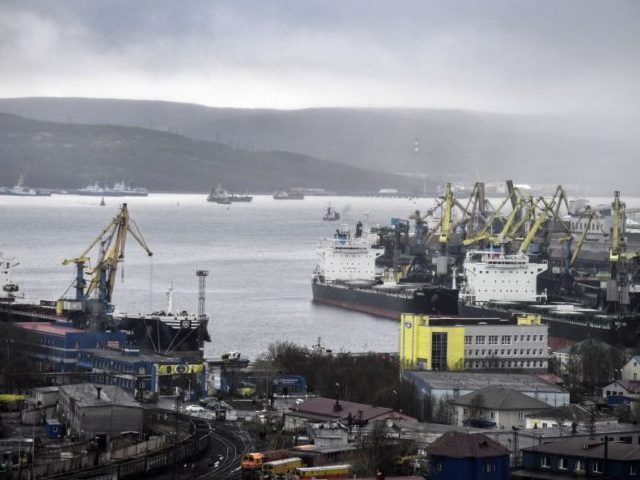Russia’s Rosatom State Nuclear Energy Corporation suggested freight shippers should consider the Northern Sea Route as an “alternative” to Egypt’s Suez Canal on Thursday after a container ship blocked the canal and halted billions of dollars worth of trade this week.
The Japanese-owned, Panama-flagged MV Ever Given container ship became lodged in the Suez Canal on March 23 during a sandstorm. The vessel remained stuck in the canal as of March 26, despite attempts to dislodge the ship by a Dutch salvage firm. The Suez Canal connects the Mediterranean to the Red Sea. More than ten percent of global maritime trade passes through the narrow waterway.
Rosatom’s Twitter account posted a thread March 25 offering three reasons “to consider Northern Sea Route as a viable alternative to the Suez Canal Route.”
The Arctic passage provides “way more space to draw peculiar pictures using your giant ships,” Rosatom wrote as its first reason. The tweet included a link to an article showing that the Panama-flagged container ship maneuvered itself in a path resembling the shape of male genitals before it became lodged in the Suez Canal.
Thread: reasons to consider Northern Sea Route as a viable alternative to the Suez Canal Route
1. Way more space to draw peculiar pictures using your giant ships https://t.co/SqcMmlC0K8
— Rosatom Global (@RosatomGlobal) March 25, 2021
“If you get icebound, we have icebreakers, well to break the ice,” Rosatom, which operates Russia’s nuclear-powered icebreaker program, wrote as its second reason.
“You might get stuck in the Suez Canal for days,” the nuclear agency offered as a third reason to switch to the Northern Sea Route. Rosatom included in its tweet an animated image from an Austin Powers film in which the main character struggles to free his shuttle car from a narrow tunnel.
3. You might get stuck in the Suez Canal for days pic.twitter.com/Z6slwdyq53
— Rosatom Global (@RosatomGlobal) March 25, 2021
Moscow considers the Arctic a highly valuable and largely untapped geostrategic region with the potential to offer new energy reserves, defense capabilities, and trade routes, which are allegedly opening up due to climate change. Russia has worked in recent years to clear a path for freight traffic along its Arctic coast and has ordered Rosatom to focus on developing heavy-duty icebreakers to achieve this goal. The future path would follow the Northern Sea Route, which runs from the Russian port of Murmansk (pictured) to the Bering Strait, near Alaska. The route would allow regular commercial transport between Asia and Europe, according to the Kremlin.
Rosatom deployed what it described as the “world’s largest and most powerful” nuclear-powered icebreaker to the Barents Sea, north of Russia, in September as part of its campaign to promote a Northern Sea Route. The icebreaker’s highly publicized debut was celebrated by Russian state media as a major development in the Kremlin’s Arctic coast program.
“This will allow setting up the electric propulsion system of the nuclear-powered ship in ice conditions,” Rosatom said in a statement on September 22.
Russian President Vladimir Putin said in 2019 that Rosatom’s Arctic fleet would eventually operate at least 13 heavy-duty icebreakers.
“Sailing the Northern Sea Route is about 40 percent shorter from China to European ports compared with sailing the Suez Canal. So far, though, traffic up north has been very little and by no means any competitor to neither [the] Suez [canal] or sailings around Africa,” the Barents Observer noted Thursday.

COMMENTS
Please let us know if you're having issues with commenting.